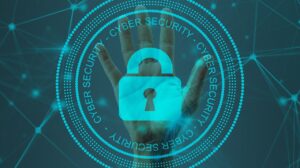Since the internet is a vast, limitless, and largely unregulated space, many creators and their works are vulnerable to unauthorized distribution and modification. With the recent emergence of decentralized financing, Non-Fungible Tokens for the transfer of intellectual property and the rights associated with it have gained traction, with nearly $2.5 billion sold in the first half of 2021. However, this emerging technology continues to elude proper regulation, and intellectual property rights violations continue unabated. Because of the lack of appropriate safeguards on the internet, these violations correspond to the problem proposed in the Prisoner’s Dilemma game, and Non-Fungible Tokens have the potential to either exacerbate or fortify violations of intellectual property rights.
The authors will first explain the salient features of the Prisoner’s Dilemma game, a popular problem in Game Theory, and then draw a parallel between this model and the nature and aggravation of intellectual property rights infringement in the online world. The authors will then propose Non-Fungible Tokens as a possible solution to the problems posed by the Prisoner’s Dilemma paradigm, as well as suggestions to mitigate this technology’s current vulnerabilities.
What is the Prisoner’s Dilemma?
The classic version of the Prisoner’s Dilemma problem involves two people, let’s call them A and B, and their two options. A and B are in police custody and have been charged with bank robbery. Each of them is given the option of remaining silent or confessing. They are isolated and do not know the other person’s decision. The consequences of their decisions are as follows:
- if one of them confesses but the other does not, the confessor is set free while the other person is sentenced to 20 years in prison.
- if neither of them confesses, they both go to jail for one year; and
- if both confess, they will be sentenced to five years in prison. Logically, both A and B would prefer freedom to one year, one year to five years, and five years to twenty years.
In such cases, the decision to confess will take precedence over the decision to remain silent. For example, A would prefer confessing because if B chooses to remain silent, A has a chance to achieve freedom, whereas if B chooses to confess, A can avoid being sentenced to 20 years in prison. As a result, each participant will go to great lengths to confess and refuse cooperation with the other person, resulting in a suboptimal game outcome. Ideally, if they both choose not to confess, they will only be sentenced to one year in prison each, resulting in the best possible outcome. However, because A and B are rational and self-interested individuals, cooperation is out of the question. This game demonstrates that what is rational on an individual level maybe irrational on a collective level.
The Application of the Prisoner’s Dilemma to Violations of Digital Intellectual Property Rights
To apply the Prisoner’s Dilemma to internet content creation, one would have to turn it into a multiplayer game in which those who confess are set free and everyone else is sentenced to 20 years in prison, whereas if everyone remains silent, they are all sentenced to one year in jail. Like the two-person model, everyone will confess and engage in a tit-for-tat strategy rather than cooperate for the best outcome for the group.
Applying this paradigm to two or more intellectual property owners, innovation and creativity will be hampered in a situation where intellectual property rights are not provided. Assume A and B are intellectual property owners who have the option to copy or not. Both A and B are better off copying the other person’s intellectual creation in this paradigm. The copier will have more opportunities and benefits from selling and renting the non-property, copiers resulting in a better reputation for future transactions than the latter. However, both A and B will be at a competitive disadvantage because their work will no longer be unique to them, and distribution will be divided because of the unauthorized exploitation of their intellectual property. If any intellectual property creation necessitates creativity, time, effort, and capital, both A and B will be able to predict their actions in advance and avoid engaging in any creative activities entirely. This is because the innovator incurs research and development costs that will not be reimbursed. After all, the copier can simply purchase the same capital and sell it at a lower cost.
The complexities of the rules multiply in a multiplayer setting. The result, however, will be consistent with a two-player game. If all intellectual property creators copy each other’s work, the natural result will be a lack of resources to copy in the first place. This is because, as previously illustrated, creative activities will cease entirely. These complexities are analogous to Hardin’s Tragedy of the Commons, which proposed that when a resource is common or shared, everyone has an incentive to appropriate it, but no one wants to invest because their benefit will always be fractioned due to mass use. To counteract the deterioration of the resource, appropriate legal obligations and rules must be enforced to introduce private benefits and avoid the consequences of overuse.
As a result, if the distribution and creation of content are not protected and regulated, a suboptimal result will result, and society will produce a less creative output.
Every year, the internet expands at an uncontrollable rate of 3,000%. According to estimates, the fastest-growing market for counterfeit trade is online. The Prisoner’s Dilemma is exacerbated by the fact that unrestricted exchange on the information superhighway makes tracing the violations impossible. As a result, artists, businesses, content creators, and others cannot rely on traditional legal remedies and distribution channels.
Non-Fungible Tokens (NFT)
By mimicking the inherent characteristics of the internet, the blockchain technology used in NFT transactions provides a plausible solution to the infringement of intellectual property rights. Any currency on the blockchain, like all information available digitally, can be transferred across the globe. However, blockchain technology can be controlled to some extent by regulating transactions, establishing contract standards, and ensuring the benefit of all parties involved. As a result, by regulating and protecting intellectual property transfer, NFTs have the potential to ensure the safety of the intellectual property.
When NFTs are included in the Prisoner’s Dilemma and Intellectual Property Rights paradigms, the optimal outcome for the players involved in these transactions is the creator of the work receiving royalties, the owner of the NFT receiving due payment in a transaction, and the purchaser of the NFT securing ownership rights. The two possible sub-optimal outcomes are when the NFT transaction is not authorized by the creator and when the concerned intellectual property is manipulated or misused. With an increase in violations, both scenarios will stifle innovation. The creator, on the other hand, will always have third-party rights and may cancel the transaction, with appropriate penalties imposed on the purchaser and the owner.
However, for NFTs to effectively work as a solution to the growing problem of online infringement of intellectual property rights, they must meet the requirements for solving a Prisoner’s Dilemma.
One way to avoid the Prisoner’s Dilemma is only to play with people you know and trust. Transparency and cooperation enable a participant to make informed decisions and avoid sub-optimal outcomes. The state can act by regulating NFTs in a hands-on manner to keep them from going underground and legitimize the blockchain system in the process. The government can also form committees to investigate and develop guidelines and rules for platforms that engage in NFT trading. A redressal mechanism can be established to consider cases of infringement of intellectual property rights and enforcement of third-party rights. A regulated framework would both encourage and assist creators in maintaining control over the distribution and monetization of their content. A regulated framework would both encourage and assist creators in maintaining control over the distribution and monetization of their content.
Strategic licensing, on the other hand, can be used by intellectual property owners to license their work to some blockchain developers to capitalize on this lucrative market. Express authorization or prohibition in such contracts can result in effective monetization and distribution prevention, respectively. For example, a creator may grant permission to produce a limited number of NFTs associated with their work to preserve the NFT’s value. This method would also be beneficial considering the growing popularity of layered art, programmable art, and generative art, as it would allow creators to set the terms to prevent their work from being distorted and resold. As a result, a licensor may expressly prohibit or limit the licensee’s ability to make changes to the licensed work for the NFT. The creator will typically retain all additional rights under the licensing in question.
Smart Contracts can also be used in conjunction with NFTs because they can self-execute only when premediated contract conditions are met. This contract ensures that the creator continues to receive a percentage of royalties and that resales and pay-outs are automatically incorporated into the transaction upon completion. However, smart contracts remain uncharted territory for Indian courts; thus, a collaboration of smart digital contracts and standard form contracts can be used to meet the requirement of written contracts when presenting an intellectual property rights infringement claim. As a result, NFTs will likely help to alleviate the growing violations of intellectual property rights on the internet by fitting squarely into the solutions to the Prisoner’s Dilemma problem, with sufficient assistance and vigilance provided by the State and the parties involved.
Concluding…
As NFT transactions gain traction, the international community and individual states must work together to ensure that this blockchain-based technology complies with international and domestic laws. Doing so as soon as possible will provide clarity to all stakeholders in the intellectual property market, allowing them to take precautions and approach the appropriate authorities. Intellectual property rights will be protected in the currently vulnerable digital space under a sanctioned regime of NFTs. This also holds the promise of capping uncharted violations that resemble intellectual property abrasion in an unprotected regime, as proposed in the Prisoner’s Dilemma game.





